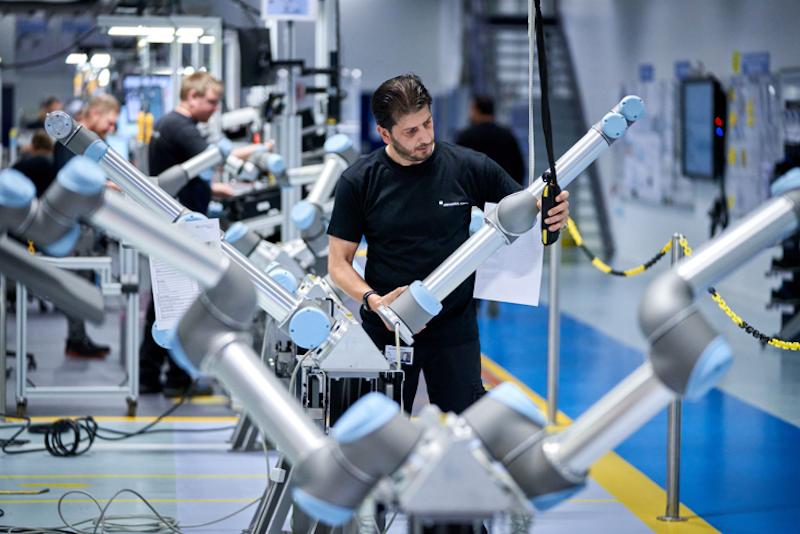
Why do you need an industrial robotic arm?
Do you like working with your hands? Do you have an interest in robotics and automation? If so, you may wonder what an industrial robotic arm is and how it could benefit you.
Contrary to popular belief, industrial robotic arms are not just for large manufacturing companies. There are many applications for these versatile machines that can benefit everyday people.
What is an industrial robotic arm, and what are its uses?
An industrial robotic arm is a type of robot designed explicitly for use in industrial settings. These robots are typically used for welding, fabricating, and assembly tasks. Industrial robotic arms are also often used for quality control, as they can be programmed to perform detailed inspections.
Many different types of industrial robotic arms are available on the market, each with unique features and applications. Some of the most popular brands include FANUC, ABB, and KUKA. When choosing an industrial robotic arm, it is crucial to select a model that is well-suited for the specific needs of your business.
How does an industrial robotic arm work
Industrial robotic arms are electronic and programmable machines that can automate tasks in factories, warehouses, and other industrial settings. These machines are designed to work with high precision and speed and can be programmed to perform repetitive tasks such as welding, cutting, or painting.
While industrial robotic arms have been in use for several decades, they have become increasingly sophisticated in recent years. Today’s industrial robots are equipped with sensors and cameras that allow them to navigate their work environments and avoid obstacles.
In addition, many industrial robots can now work collaboratively with human workers, increasing their efficiency. As industrial robotic technology continues to evolve, these machines will likely play an even more significant role in manufacturing.
The benefits of using an industrial robotic arm
Industrial robotic arms offer some advantages for businesses. They can work tirelessly for long periods without getting rest and can be programmed to perform precise tasks with great accuracy. This can result in a significant increase in productivity and improved product quality.
In addition, robotic arms can often be used in dangerous or demanding environments, such as those involving high temperatures or toxic substances. This can help to create a safer working environment for employees.
Finally, the cost of using an industrial robotic arm is typically very reasonable, making it an attractive option for businesses of all sizes.
The cost of owning and operating an industrial robotic arm
The cost of owning and operating an industrial robotic arm can vary depending on several factors, including the size and capabilities of the arm, the industry in which it will be used, and the country in which it is purchased. However, some general trends can be observed. In general, larger and more complex robotic arms will be more expensive to purchase and operate than smaller and simpler ones.
Additionally, robotic arms used in manufacturing are more expensive than those used in other industries, such as healthcare or agriculture. Finally, robotic arms purchased in developed countries are typically more expensive than those purchased in developing countries. The cost of owning and operating an industrial robotic arm can be high, but the exact amount will vary depending on many factors.
How to choose the right industrial robotic arm for your needs
When choosing the right industrial robotic arm for your needs, remember a few things:
- You’ll need to decide what type of arm you need. There are two basic types of arms: fixed and articulated. Fixed arms are great for simple tasks, while articulated arms are more versatile and can handle more complex tasks.
- You’ll need to consider the payload capacity of the arm. This is the amount of weight that the arm can lift safely.
- You’ll need to choose a power source for the arm. The most common options are electric or pneumatic power. With these factors in mind, you should be able to choose the right arm for your needs.
FAQs
Let’s look at some frequently asked questions.
How do they move so precisely?
The answer behind how an industrial robot arm moves precisely is actually quite interesting. It lies in the design of the arm itself, which features a series of interlocking joints that allow for a wide range of movement.
How can they lift heavy objects?
The answer to this question also lies in the design of the arm, which features a powerful motor capable of generating a large amount of force.
Do they damage the products?
Many industrial robotic arms are equipped with sensors that help to prevent them from damaging the objects they are handling. These sensors can detect when an object is getting too close to the arm and will automatically adjust the arm’s position accordingly. As a result, industrial robotic arms can easily handle even the heaviest objects.
